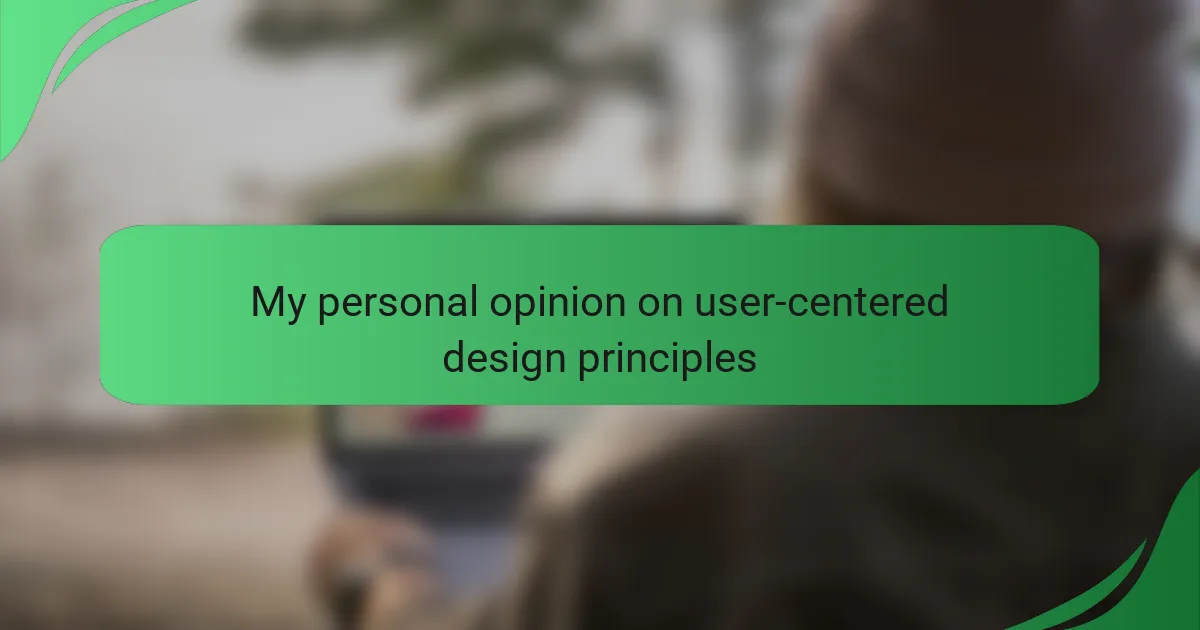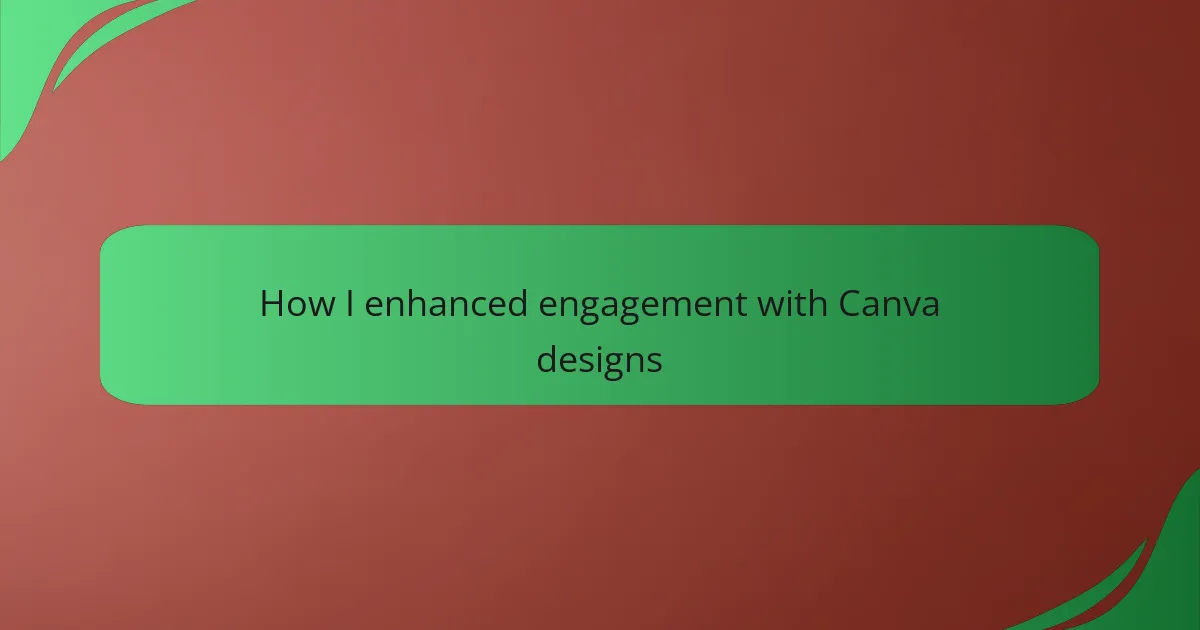Key takeaways
- User-centered design prioritizes user needs, resulting in higher satisfaction and loyalty.
- Key principles include empathy, iteration, accessibility, usability, and engagement.
- Effective interface design requires clarity, consistency, feedback, accessibility, and simplicity.
- Applying user-centered design involves conducting research, usability testing, creating personas, and iterative design.
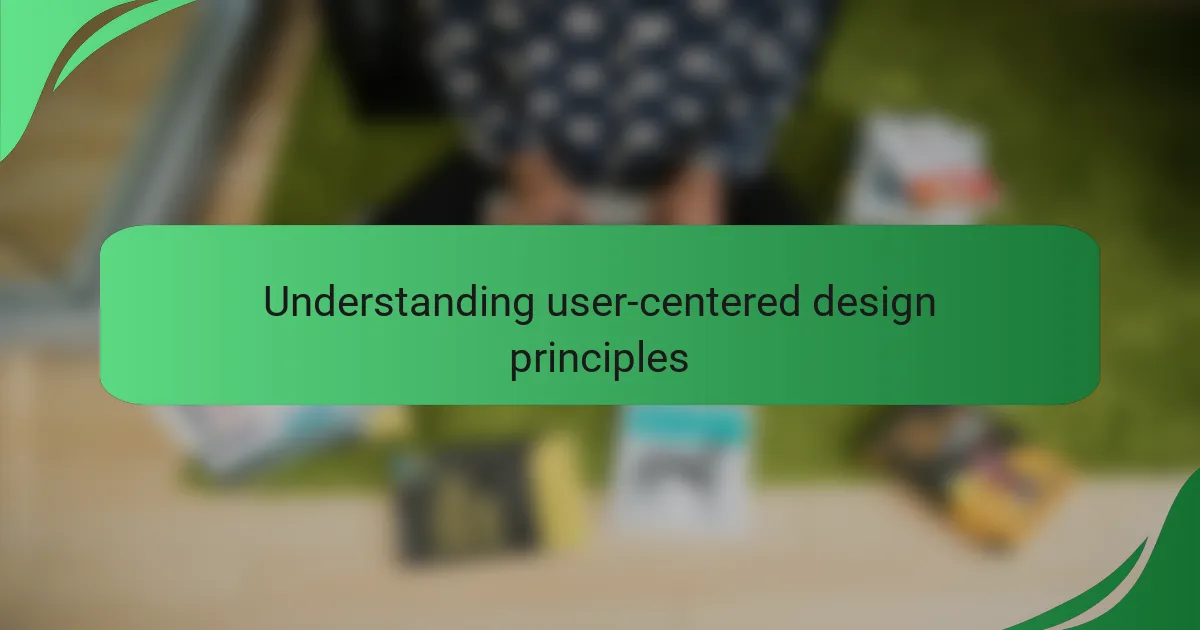
Understanding user-centered design principles
User-centered design principles focus on creating products that truly resonate with their users. From my experience, this approach often results in higher satisfaction because it prioritizes user needs at every step. I remember working on a project where we had to redesign an interface; we conducted user interviews and real-world testing, which uncovered insights I’d never considered. It was empowering to see how small changes made a significant impact on user experience.
When I think about the core aspects of user-centered design, several principles come to mind:
- Empathy: Understanding users’ needs, feelings, and challenges.
- Iteration: Continuous testing and refining based on user feedback.
- Accessibility: Ensuring that the design is usable by people of all abilities.
- Usability: Creating an intuitive experience that requires minimal effort to navigate.
- Engagement: Designing experiences that keep users interested and motivated.
These principles are not just theoretical; they are essential practices that I’ve found lead to successful designs.
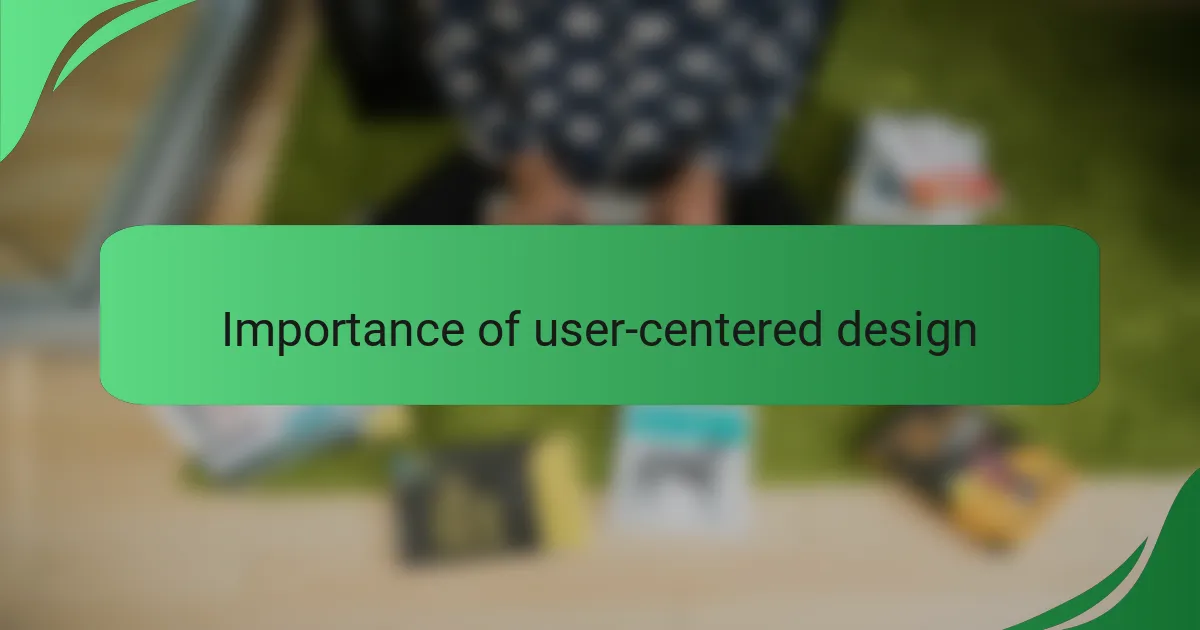
Importance of user-centered design
User-centered design is crucial because it places the actual user at the heart of the development process. I remember a project where our target audience was initially overlooked. After revising our approach based on user feedback, the final product exceeded our expectations. It became clear to me that when users feel valued, their loyalty grows, leading to a more sustainable product.
Furthermore, I often find that designs celebrating empathy lead to not just functional products, but emotionally resonant experiences. When I observed users interacting with an interface I had designed, I noticed the joy on their faces when things worked effortlessly. It made me realize how meaningful it is to create something that genuinely improves people’s lives.
Ultimately, neglecting user-centered design can result in frustration and dissatisfaction. Have you ever used a product that left you scratching your head? I have, and those moments remind me why understanding user needs is non-negotiable. Focusing on user-centered principles can transform ordinary experiences into extraordinary ones, fostering deep connections between users and the design.
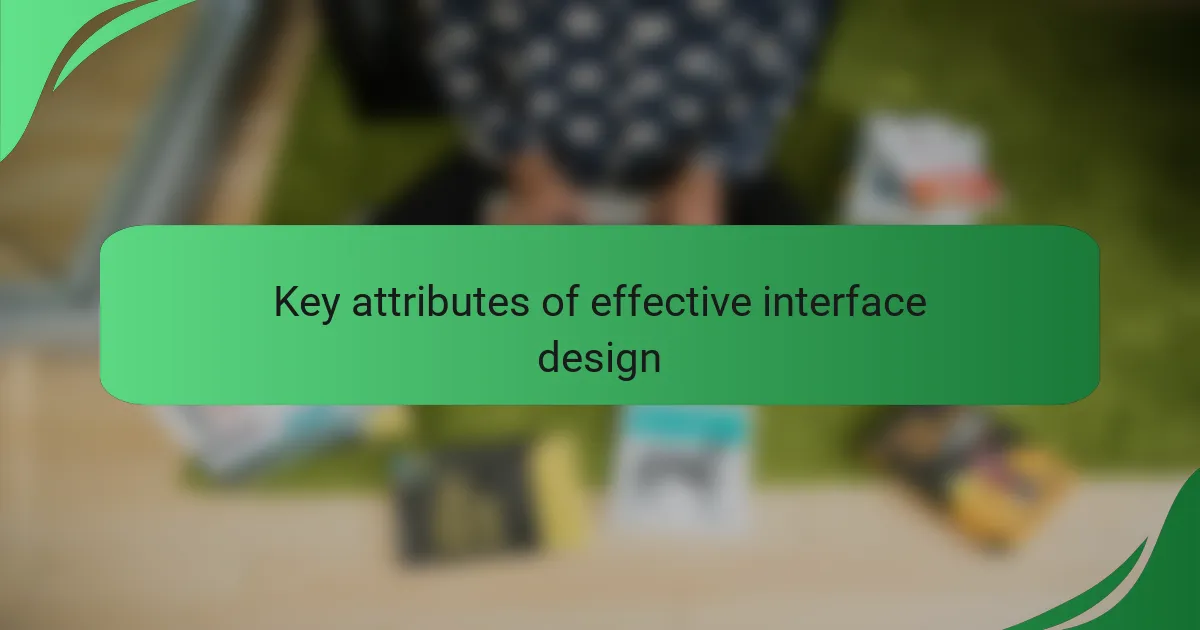
Key attributes of effective interface design
When I think about effective interface design, I can’t help but emphasize how crucial it is to prioritize user needs. Personally, I’ve had experiences where a well-designed interface made my tasks a pleasure rather than a chore. This kind of thoughtful design fosters a deeper connection between the user and the product, ultimately enhancing user satisfaction.
One key attribute of effective interface design is clarity. Users should immediately understand how to navigate and utilize the interface without confusion. Additionally, consistent design elements help users build familiarity, making their interactions smoother and more intuitive.
Here are some essential attributes to consider for effective interface design:
- Clarity: Information should be presented clearly to reduce cognitive load.
- Consistency: Uniform design elements create predictability and improve usability.
- Feedback: Users should receive immediate responses to their actions, confirming they’ve made the right choice.
- Accessibility: Interfaces must be designed to cater to users of all abilities, ensuring inclusivity.
- Simplicity: Essential features should be highlighted, minimizing distractions and maximizing focus.
Each of these attributes serves to create a more engaging and user-friendly experience, which I believe is the ultimate goal of interface design.
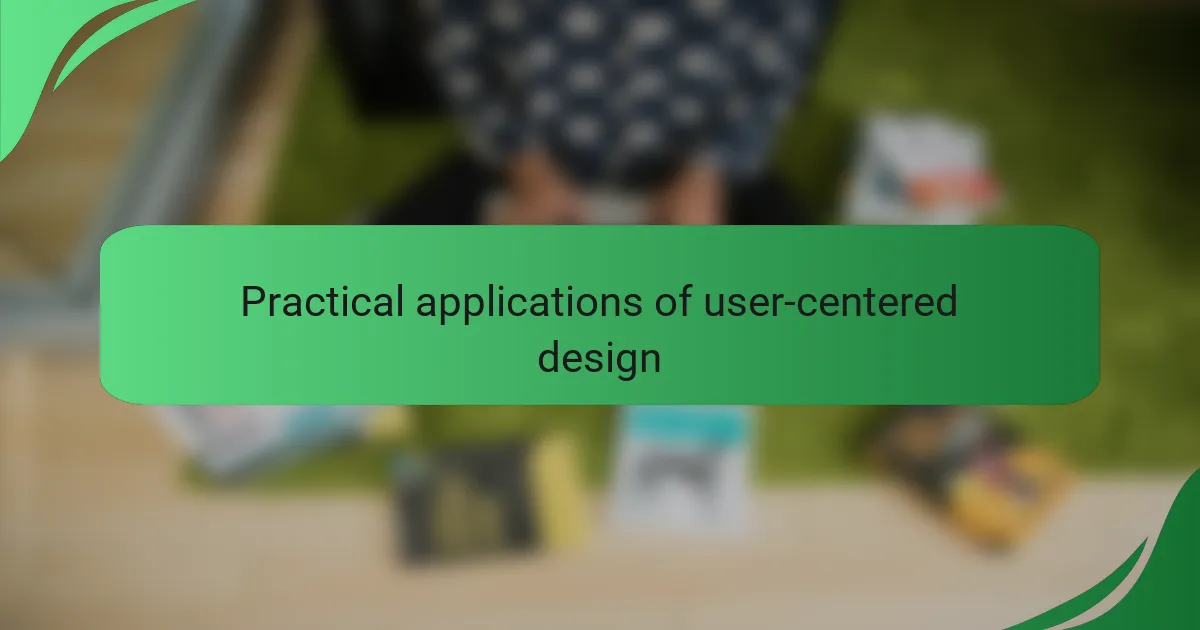
Practical applications of user-centered design
User-centered design (UCD) really shines when it’s applied to projects where user engagement is key. For instance, I once worked on a mobile app aimed at helping users manage their daily tasks. By conducting user interviews and usability tests early in the design process, we discovered that users thrived on visual cues, so we integrated color-coded categories. This seemingly small change transformed the user experience, leading to increased satisfaction and usage rates.
In another project, I realized the power of feedback loops in creating a connection with users. After implementing a simple feature that allowed users to share their thoughts on design changes, it not only made them feel valued but also provided invaluable insights that shaped future updates. This exemplifies how UCD not only improves functionality but also fosters a sense of community.
Here are some practical applications of user-centered design:
- Conduct user research to identify needs and pain points.
- Implement usability testing with real users to gather feedback.
- Create personas to represent different user types and their goals.
- Use iterative design to continuously improve based on user feedback.
- Develop responsive interfaces that adapt to various devices and user preferences.
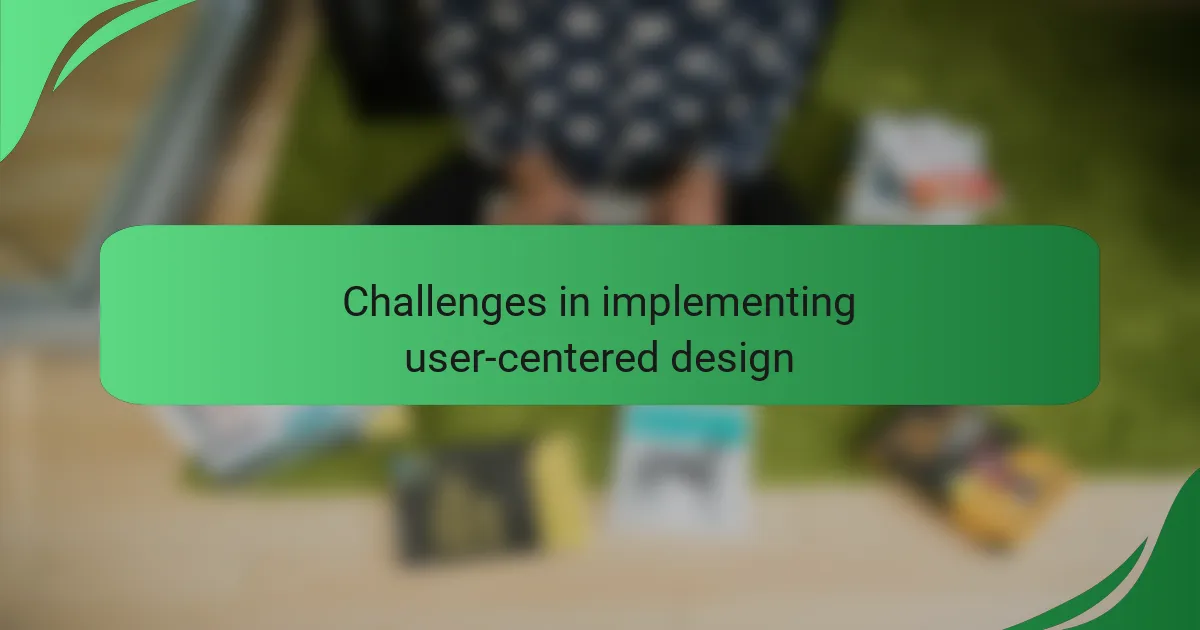
Challenges in implementing user-centered design
Implementing user-centered design (UCD) principles isn’t always a straightforward process, and I’ve seen firsthand the hurdles that teams often face. One common challenge is balancing user needs with business goals. I recall a project where the design team had to make hard choices between user feedback and stakeholder pressures, which often led to tension. It made me realize how crucial it is to advocate for users while still keeping the project’s objectives in mind.
Another significant challenge lies in thoroughly understanding user behavior. It’s not just about gathering data; it’s about interpreting it in a way that reflects real user experiences. I remember a time when we misinterpreted survey results, assuming what users wanted was aligned with their actual use cases. This taught me the importance of continuous user engagement for truly effective design.
Here are some challenges I’ve encountered in implementing user-centered design:
- Stakeholder Resistance: Sometimes, stakeholders may prioritize their vision over user needs.
- Limited Resources: Time and budget constraints often restrict comprehensive user research.
- Miscommunication: There’s a risk of misinterpreting user data, leading to design decisions that don’t resonate.
- Dynamic User Needs: User preferences can change, making it difficult to capture the right design direction.
- Team Alignment: Ensuring all team members have a shared understanding of user needs can be challenging.
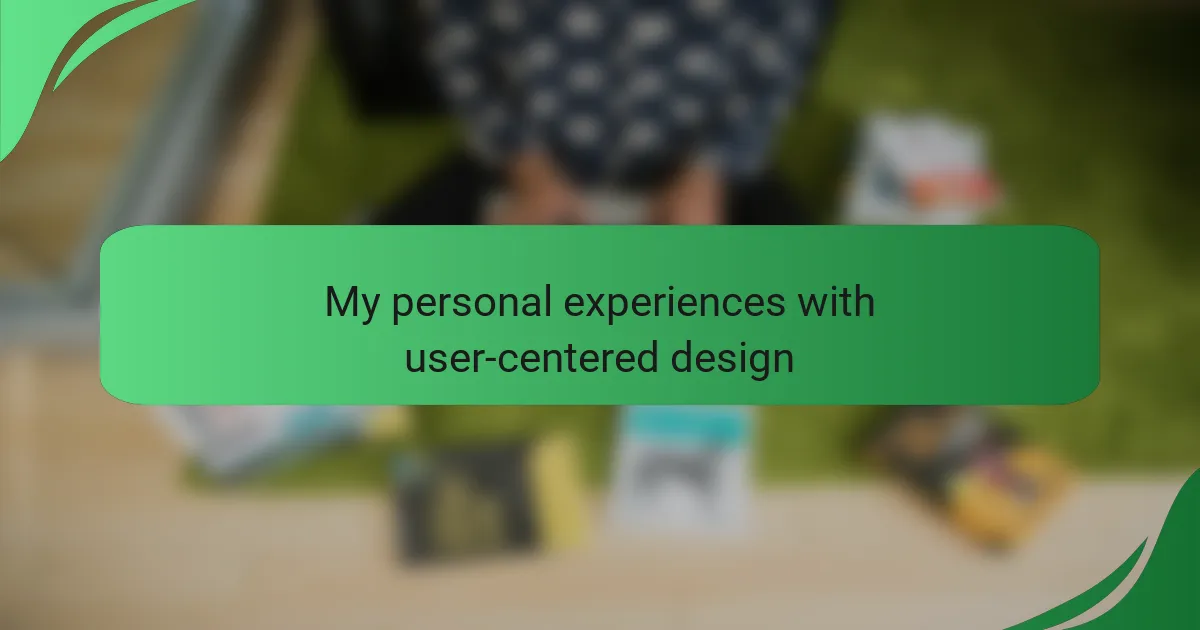
My personal experiences with user-centered design
User-centered design has profoundly shaped my approach to creating digital experiences. I vividly recall a project where I was tasked with redesigning an app for a local non-profit. By involving users early through feedback sessions, we uncovered their real pain points, which ultimately guided our design choices. It was a heartwarming experience to see the joy on their faces when the final product aligned with their needs.
Through these experiences, I’ve learned several key aspects of user-centered design:
- Empathy is Essential: Understanding users’ emotions helps in crafting solutions that resonate.
- Continuous Feedback: Regular sessions with users can unveil insights that static research simply cannot.
- Iterative Design: Making small, incremental changes based on user input leads to more successful outcomes.
- Collaboration is Key: Engaging cross-disciplinary teams fosters a richer design process.
- Real-World Testing: Observing users interact with the design in real life unveils unforeseen challenges and opportunities.
